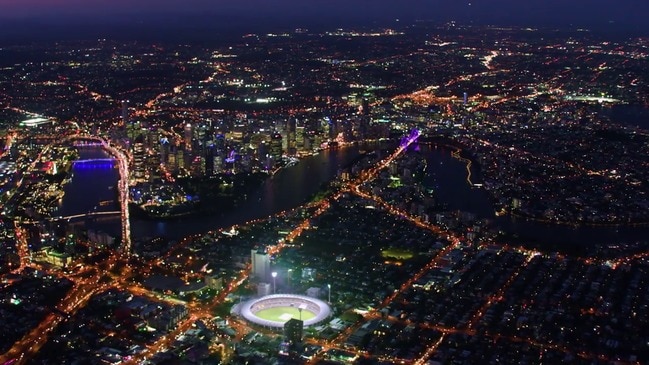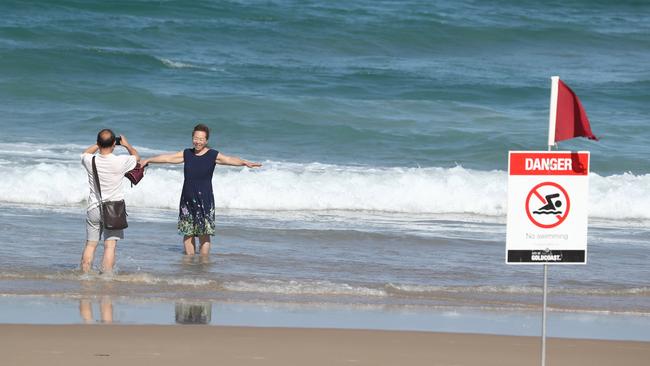Future tourism: Personal safety fears keep Chinese away from regions
Three barriers have been identified stopping Chinese tourists venturing beyond our major cities and into regional Queensland.

QLD News
Don't miss out on the headlines from QLD News. Followed categories will be added to My News.
QUEENSLAND will have to overcome a fear factor to encourage Chinese tourists to visit regional areas.
Concern over personal safety was identified as one of the top three barriers to venturing beyond major cities and tourism hot spots in surveys of thousands of Chinese tourists and potential visitors.
Qld tourism: Sleeping giant India set to awaken
Brisbane tourism: Airport eyes 23 new direct routes
Future Tourism lunch: Your chance to hear from the experts
“These concerns possibly arise from unfamiliarity with the large sparsely populated areas within regional Australia, and may be reinforced by issues of personal safety travelling within rural and remote parts of China,” a report by the federal agency Tourism Research Australia found.
Language difficulties add to the sense of insecurity, it added.
Researchers asked 1066 Chinese tourists here and another 2215 potential visitors in China why they avoided travelling beyond the cities.
The most common results were travel time and budget constraints.
Concerns over driving distances were a concern, so visitors tended to seek destinations with good train and air links — but found a lack of transport options and organised tours.

Among those who did go to a regional destination, over three-quarters said it exceeded their expectations, with strong satisfaction ratings for attractions, accommodation and dining.
But they were less happy with visitor information centres, shopping and internet/wi-fi quality.
Tourism and Events Queensland CEO Leanne Coddington said the best response was to make Chinese tourist feel comfortable and welcome.
Deals with the giant Alibaba Group and UnionPay International mobile phone-based payment platforms used by hundreds of millions of Chinese people helped create a familiarity for visitors.
“We know if the offering is unique and compelling enough, they will go,” Ms Coddington said.
A Tourism australia spokesman said: “Australia is widely acknowledged to be one of the safest and most welcoming destinations in the world.
“Our strategy is very much about targeting free and independent Chinese travellers, who we know are confident, naturally inquisitive and increasingly receptive to exploring more of regional Australia.”
The Tourism Research Australia report highlights the potential windfall regions are missing out on.
China is now our largest source of overseas tourists, with 1.3 million visiting Australia last year, including just over 500,000 to Queensland.
That number is forecast to triple over the next decade, with Chinese visitors expected to comprise more than one in every three inbound overseas tourists by 2027.
While the student and business markets will grow steadily, more than 90 per cent of the increase is forecast to be holiday-makers and they will account for $13.9 billion of the $26.2 billion spend nationally.

They also stay longer — an average 19.5 nights — than the 5.6 nights of organised or package holiday Chinese visitors.
There is a big but, when it comes to the regions, though.
In what is being dubbed ‘’the gateway effect’’, a massive 79 per cent of the nights spent on holiday here by Chinese free and independent travellers are in the four major cities of Sydney, Melbourne, Brisbane and Perth.
Another 12 per cent are spent in secondary capitals and bucket list destinations which include the Gold Coast, Whitsundays and Tropical North Queensland.
All other regions get a mere 9 per cent share of nights.
The average length of stay in regional areas is just 9.4 nights — well short of the 27.9 nights for Japanese visitors, 25.8 nights for those from the UK and 15.3 nights for Americans.
The report recommends consideration of introducing Chinese budget hotel chains such as Home Inn and Camp which are familiar to tourists.
Other tips are providing a taste of surfing — customised to skill level to avoid losing face, and with specialised photography and video services to capture the all-important images.
It says golf can be appealing to Chinese who view it as a hobby for the rich, while marine animal watching in their natural environment provides an opportunity unavailable in their own country where many species are critically endangered.
Chinese tourists have an enthusiasm for island holidays, while farm and pasture experiences are highly sought-after.
Book your ticket to the Future Tourism lunch event
http://couriermail.com.au/future
Originally published as Future tourism: Personal safety fears keep Chinese away from regions


